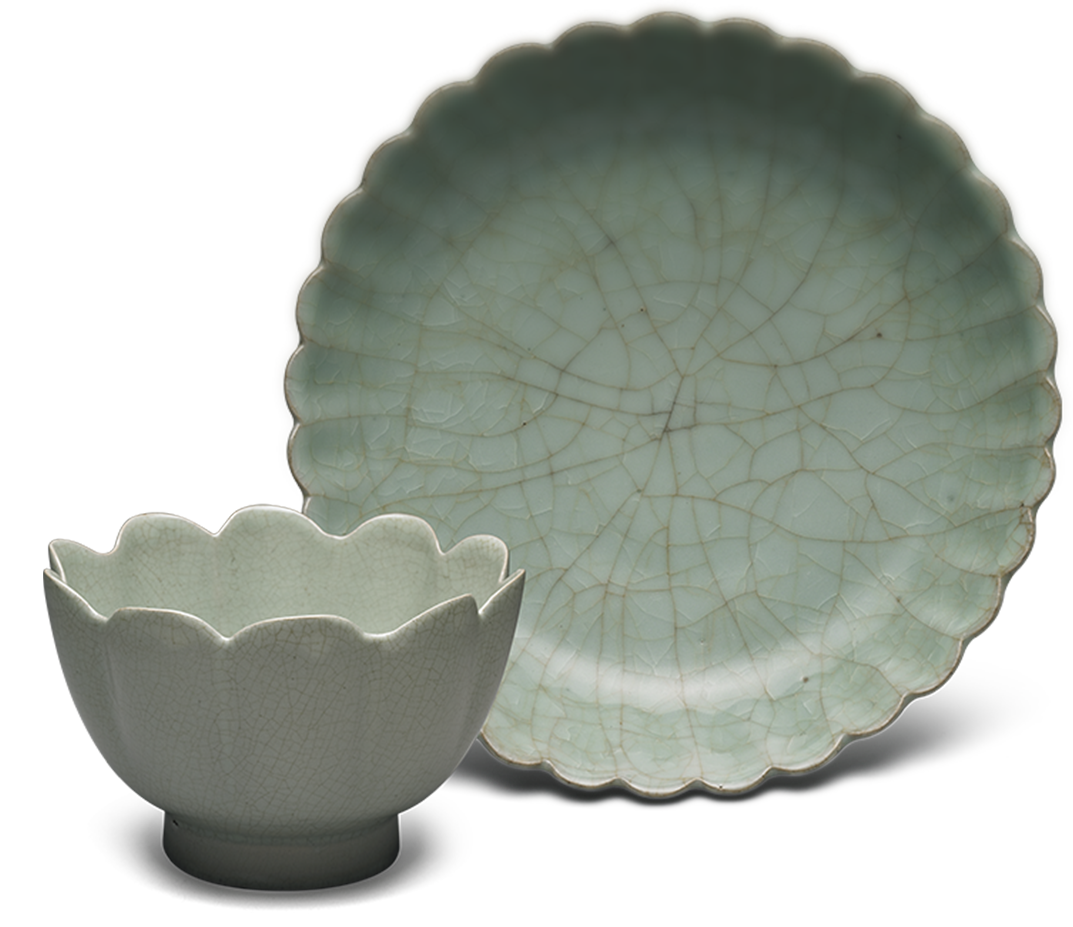When firing porcelains, the differing rates of expansion and contraction can result in the cracking of the glaze surface, which is known as crackle. Those with crackle are the works mentioned in texts as "cracked pieces," so those with celadon glaze can naturally be called "cracked celadon." The crackle pattern on these works is naturally formed, but staining is sometimes added to highlight it.
Ming dynasty records mention the brothers Zhang, potters in Chuzhou. The elder one's works were called "Older Brother wares" featured crackle patterning. In fact, crackle later became a focus of attention among connoisseurs of the Ming and Qing dynasties, and Gao Lian of the Ming in his Eight Discourses on the Art of Living divided crackle into three types: "eel-blood ice cracks," "plum-blossom-petal dark pattern," and "fine-cracked pattern." And in the Qing dynasty, the Qianlong emperor used the character for "passionate" as a homonym for "cracked" to describe crackled Ge porcelain, singing its praise with the line, "Just like a martyr living up to its name," The crackle of porcelain thus became a metaphor for the passion of a martyr.
As for Ge ware, was it produced at one kiln site or many? Texts mention two sites in Chuzhou (modern Longquan County, Zhejiang Province) and Phoenix Mountain in Hangzhou (modern Hangzhou City, Zhejiang Province). Archaeological evidence also confirms that crackled celadon was fired at the Longquan County large and Xiaomei kilns. And Guan-type celadon from the Yuan dynasty stratum at the Laohudong kiln site also reveals similarities with surviving Ge-ware pieces from the former Qing court collection, leading to the argument that Ge wares were fired at Laohudong.


.jpg)
.jpg)
.jpg)
